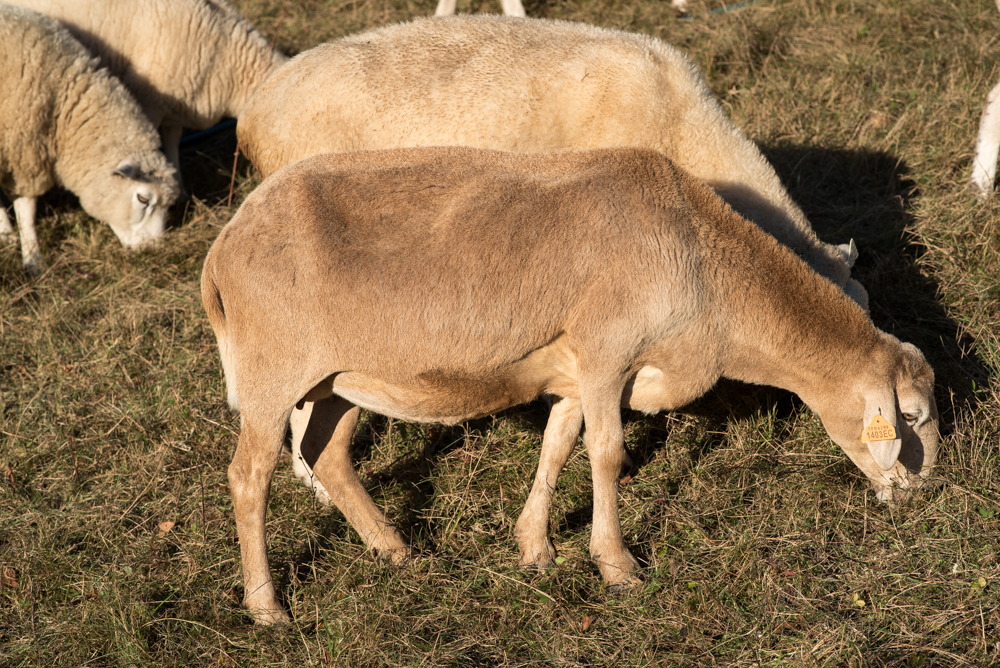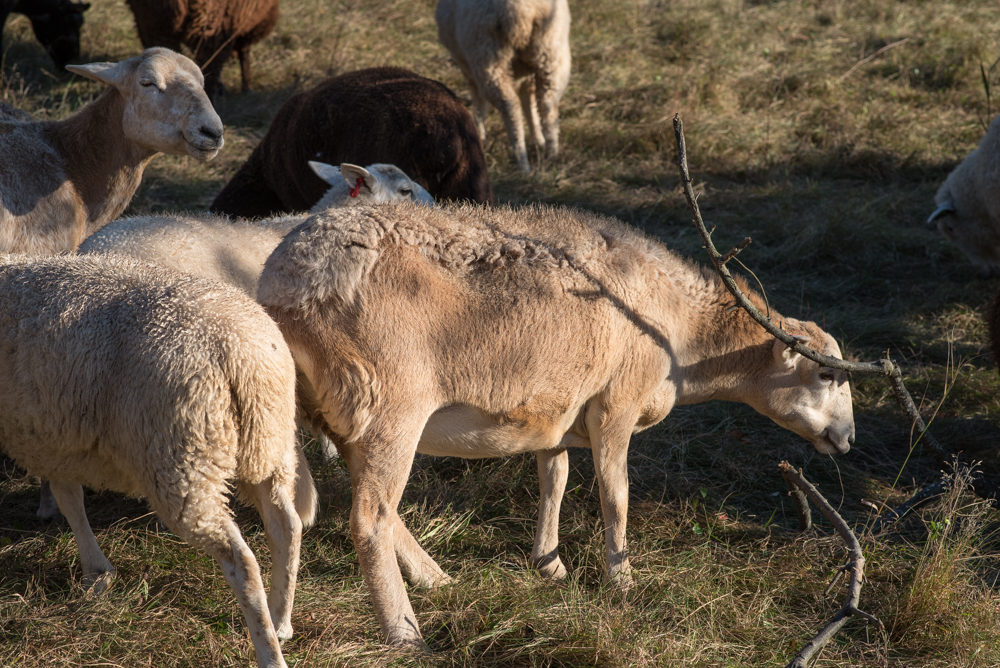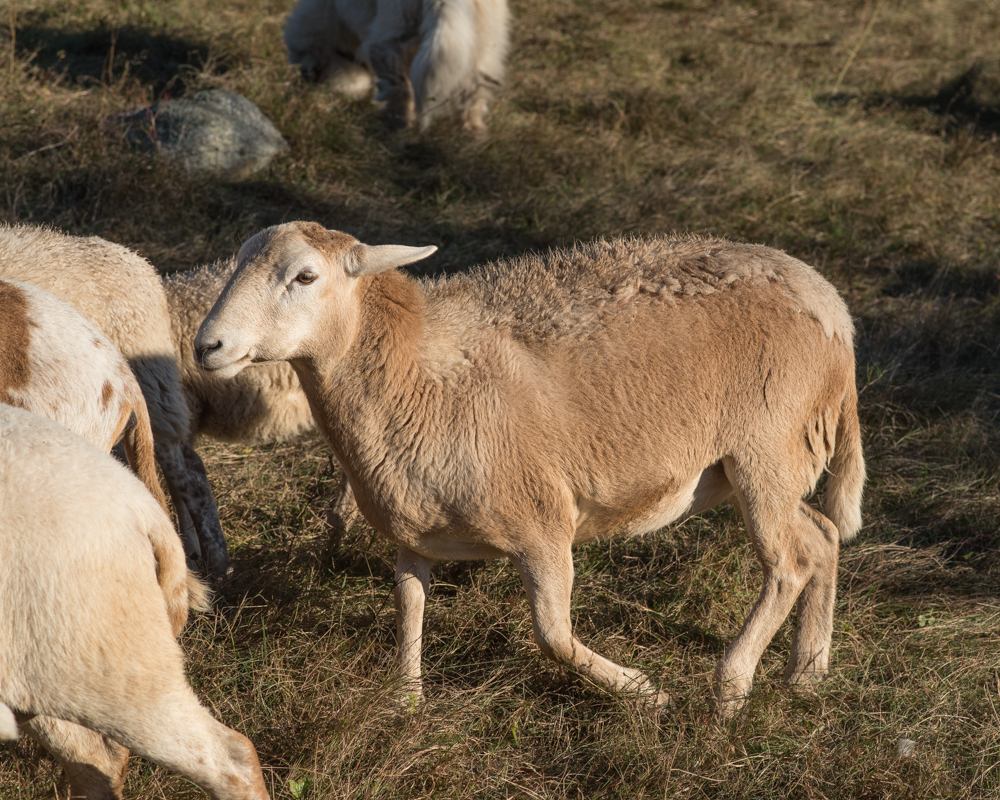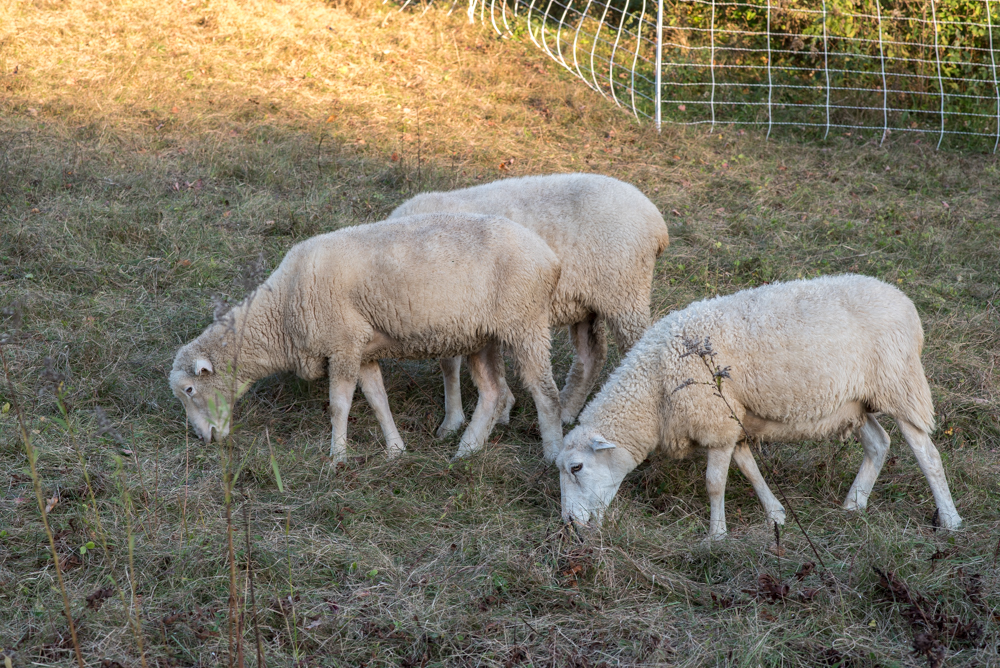Every time I interact with Bill, I feel like I’ve learned enough since our last meeting to absorb a little more of what he’s teaching me. We’ve talked a lot over the past year about how to read grazing — how to know exactly how big a grazing area the sheep need, and for how long. Early on, he showed me how to look at the grass, how much should be left when I move my flock so that I’m not overgrazing the pasture (“When in doubt, leave more.”). At some point last fall, he showed me how to check the body condition of my sheep, feeling the amount of fat cover on their hips and spine, to get an understanding of their overall health and nutritional status. I try to check body condition once a month to know whether they’re gaining on losing condition the way I’m managing their grazing.
At the Woodbury place, the pastures have been hard for me to judge. They’re full of mature grass that the sheep aren’t so keen to eat, plus a mix of other plants, some yummy and some not; it’s not always been obvious to me whether the sheep have eaten as much as they will or whether I should leave them for a little longer. Bill pointed out that you can tell if a sheep’s rumen is full by looking for a little hollow space in front of the hips. Hollow means that the sheep hasn’t eaten as much as she could in the last 12 hours or so, and it’s completely independent from how much fat cover she has.* If the sheep are looking empty after they’ve been in the grazing area for a while, then they likely need access to more grass — I need to give them a bigger grazing area or move them more frequently. Like many of the things Bill explains to me, this was both revelatory and blindingly obvious (in retrospect), now that I knew enough to appreciate the implications.
On that day, several of my Katahdin ewes were looking particularly hollow, but once I increased the size of their grazing areas, they looked consistently full before I moved them to new grass. This morning I left the flock in the area I’d set for them last night, knowing that they would be a little hungry by the time I moved them, but I wanted to make sure that area got well eaten. Here’s what a slightly empty Katahdin ewe looks like.

Another ewe looks a little empty in this image

but quite full in this one,

so it pays to look carefully. It’s also much easier to judge the state of rumen fill with a hair sheep like a Katahdin. With these gals, who were just shorn in July, it’s already tough to judge hollowness under all the wool.

This latest lesson is giving me additional reasons to keep my Katahdins in the flock. They tend to produce small, slow-growing lambs, but they’re awfully helpful to a new shepherd who’s still figuring out the grazing thing.
_____________
* A fat sheep can have an empty rumen. Body condition is a long-term variable, changing slowly over weeks or months, while rumen fill tells you about the last half day.
Tagged: empty, ewes, full, hair sheep, hollow, hungry, Katahdin, pasture, rotational grazing, rumen, sheep, Woodbury, wool sheep